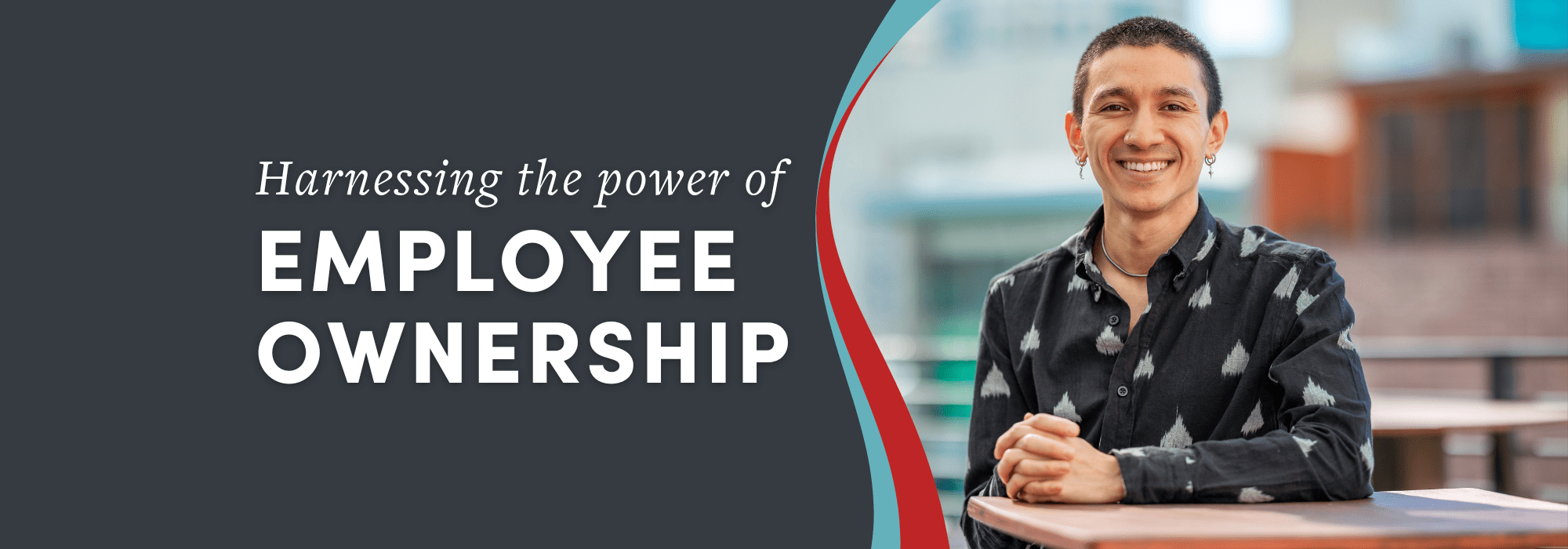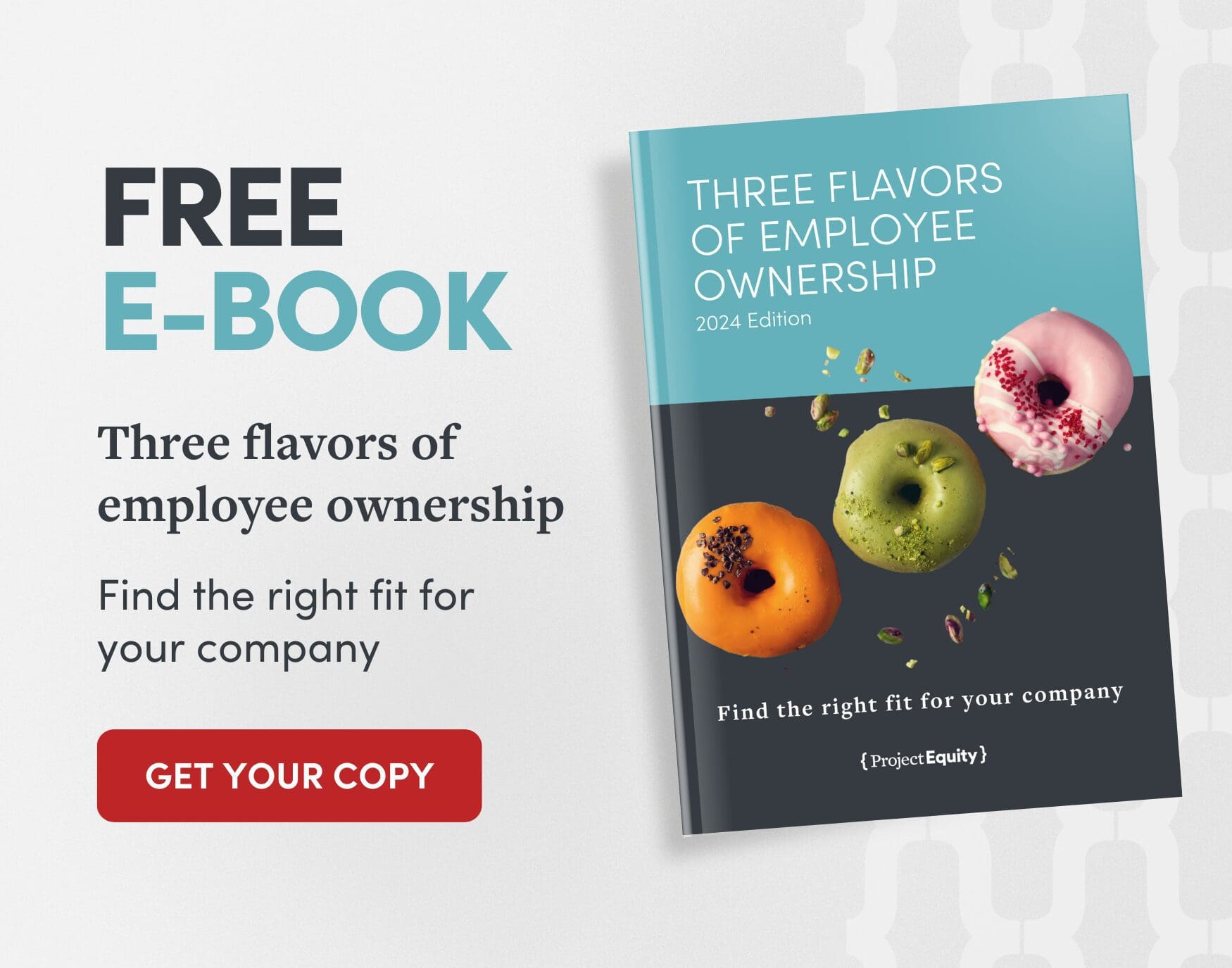The data is in: how employee ownership increases job quality and business resilience
- Tyler Rivera
The latest impact data from Project Equity tells a powerful story: Employee-owned (EO) businesses are showing that it’s possible to weather economic challenges while driving sustainable growth that delivers real benefits for workers. From profit-sharing and wage increases to low turnover, quality benefits, and shared governance, EO companies are modeling what inclusive, worker-centered ownership looks like in practice.
These insights are key to strengthening the case for EO as a practical option for succession planning, employee retention, and business resilience. While there is mounting evidence of the benefits of Employee Stock Ownership Plans (ESOPs), there is still limited data available on other EO models like worker cooperatives and Employee Ownership Trusts (EOTs). Filling this gap is essential to building EO’s credibility and proving the value it can create for businesses operating in all sectors and scales of the economy.
That’s where our Impact Measurement & Management (IMM) program comes in. Launched in 2021, the program tracks impact data from companies that Project Equity has supported through EO transitions, including information on wages, benefits, profit-sharing, workforce retention, and company financials. In 2024, our IMM program reached a new milestone: 18 clients provided fiscal year 2024 (FY24) data—our highest participation rate to date. While still a relatively small sample size, each data point adds to the growing body of evidence we are building and strengthens the collective story of what EO makes possible.
So, what does the data reveal?
Financial resilience and workforce stability
Despite a challenging economic climate marked by inflation, high interest rates, and shifting consumer demand, EO businesses continue to demonstrate resilience. Among clients that shared FY24 financial data, over half saw their revenues grow—by an average of 46% over the past 2–4 years. Some have seen especially strong post-transition growth: at FEED Sonoma, a worker- and farmer-owned cooperative, revenues have climbed nearly 80% since converting to EO in 2020, while Hummingbird Wholesale has grown revenues by nearly 20% since becoming one of Oregon’s first employee-owned purpose trusts in 2023.
This strong financial performance has been matched by remarkable workforce stability, particularly at a time when many companies are struggling to hold onto staff. In 2024, 15 out of 18 clients reported average or below-average employee turnover compared to peers in their industries.
That level of workforce continuity can be transformative, especially in sectors known for high churn. At Local Ocean Seafoods, for example, turnover has steadily decreased since their 2022 transition to an EOT, reaching just 40% last year—half the restaurant industry standard of almost 80%. The company also reported an average employee tenure of 4.43 years in 2024, nearly 15 times the national restaurant industry average of 110 days. Also standing apart from its peers, Happy Earth Cleaning saw a staff turnover rate of only 30% in 2024, compared to a cleaning industry average of about 200%.
Taken together, these data points show that while EO businesses face the same market pressures as other firms, many do so from a stronger footing. In difficult times, the EO model is not just helping businesses survive—it’s enabling them to invest in their people while enhancing long-term sustainability.
Wage growth and wealth building
Amid economic uncertainty, EO businesses continue to deliver on one of EO’s core promises: quality jobs with fair compensation. In 2024, 13 out of 18 clients reported offering average or above-average pay compared to their industry peers. Despite a challenging economic climate, eight of those businesses have increased median pay for non-management employees in recent years, with five of those raising wages by more than 10%. Seven clients also reported growth in median compensation for management employees in recent years, with five of those increasing pay by more than 10%.
These wage gains are amplified by another defining feature of EO: profit sharing. In 2024, ten clients distributed approximately $836,000 in profits to 195 employee-owners for an average payout of about $4,300 per person. The seven worker-owners at a Bay Area manufacturing company, for example, received nearly $170,000 in total patronage—a direct return on the value they helped create. Profit sharing represents more than just a financial bonus: it reinforces dignity, agency, and a sense of shared investment in the company’s success.
As one worker-owner at Happy Earth Cleaning put it: “I love being a part owner of the business at which I work. I’ve found it very empowering. Working entry-level jobs can be very demoralizing. Employee ownership helps alleviate that with patronage and mutual respect.”
Wage growth and profit-sharing highlight how EO can strengthen financial security and help workers build wealth over time, generating tangible benefits that extend well beyond a single paycheck.
Fringe benefits
Beyond wages and profits, EO companies often raise the floor on job quality by offering comprehensive benefits—many in industries where such benefits are rare. In 2024, 15 of 18 clients provided employer-subsidized health insurance to at least all full-time staff, with several expanding coverage post-transition to include dental and vision care. 15 clients also reported providing a retirement savings plan with an employer contribution, and all 18 offer paid leave.
Some have gone further: Since its 2023 transition, Hummingbird Wholesale has increased paid holidays from three to seven, instituted a 401(k) match, expanded PTO for all employees, and introduced paid vacation time for part-time employees. These improvements reflect how EO can translate ownership into better everyday working conditions. As Stacy Kraker, Hummingbird Wholesale’s CEO, put it, “Compared to our industry peers, we strive to make a greater overall positive impact and I believe we do so.”
Ownership culture
The benefits of EO also extend to the culture of work itself. In our 2024 qualitative data collection, employee-owners frequently described a shift toward greater transparency, collaboration, and voice in decision making. At Atthowe Fine Arts Services, one employee noted, “With the increase in committees and communication methods from the staff to management and the board, more voices feel acknowledged and have influence on the directions we take as a company.”
An employee-owner at Maximum Fun similarly shared, “I think my fellow worker-owners are more engaged and invested in the success of the company and their peers, which makes me feel more supported.”
Importantly, the culture of voice and participation that EO fosters can be especially powerful during challenging periods, as one employee-owner at The Improve Group—a Minneapolis-based evaluation consulting cooperative—articulated: “Especially lately, as we are wading through more uncertain times, I understand that my effort, thoughtfulness, and input will be important to the long-term success of the company. It’s a mindset change from trusting one leader to trusting myself and my fellow co-owners.”
Together, these benefits paint a fuller picture of what makes EO truly powerful: It not only yields financial returns for workers, but also workplaces where people are secure, respected, and empowered to shape their shared future.
Looking ahead
The findings from our 2024 IMM data underscore how, even amid economic headwinds, EO can be a catalyst for business resilience and quality jobs. We’re grateful to the clients who contributed their data this year, helping deepen our collective understanding of how EO transforms workplaces and improves lives.
As we continue expanding our efforts to measure the impacts of EO transitions, we look forward to sharing more insights and stories that demonstrate EO is not just a good idea—but a proven, scalable strategy for building stronger businesses and more equitable economies.
Want more insights into how EO boosts businesses, workers and communities alike?
- Discover how these small businesses have transformed since becoming employee-owned.
- Learn more reasons why EO helps SMBs.
- Check out our 2024 IMM report: Unlocking Economic Opportunity Through Ownership.
About the author
Tyler is passionate about building a more just and democratic economy that works for all. As Ecosystem Development Manager at Project Equity, he advances efforts to scale employee ownership by helping partner organizations build lasting EO capacity and infrastructure across key regions. He also coordinates Project Equity’s Impact Measurement & Management (IMM) program, which captures data on the benefits of EO transitions for workers, businesses, and communities. In addition, he has led policy research focused on advancing Black wealth building and economic opportunity through EO as project manager for a research partnership with Morehouse College and the University of California, Riverside.



